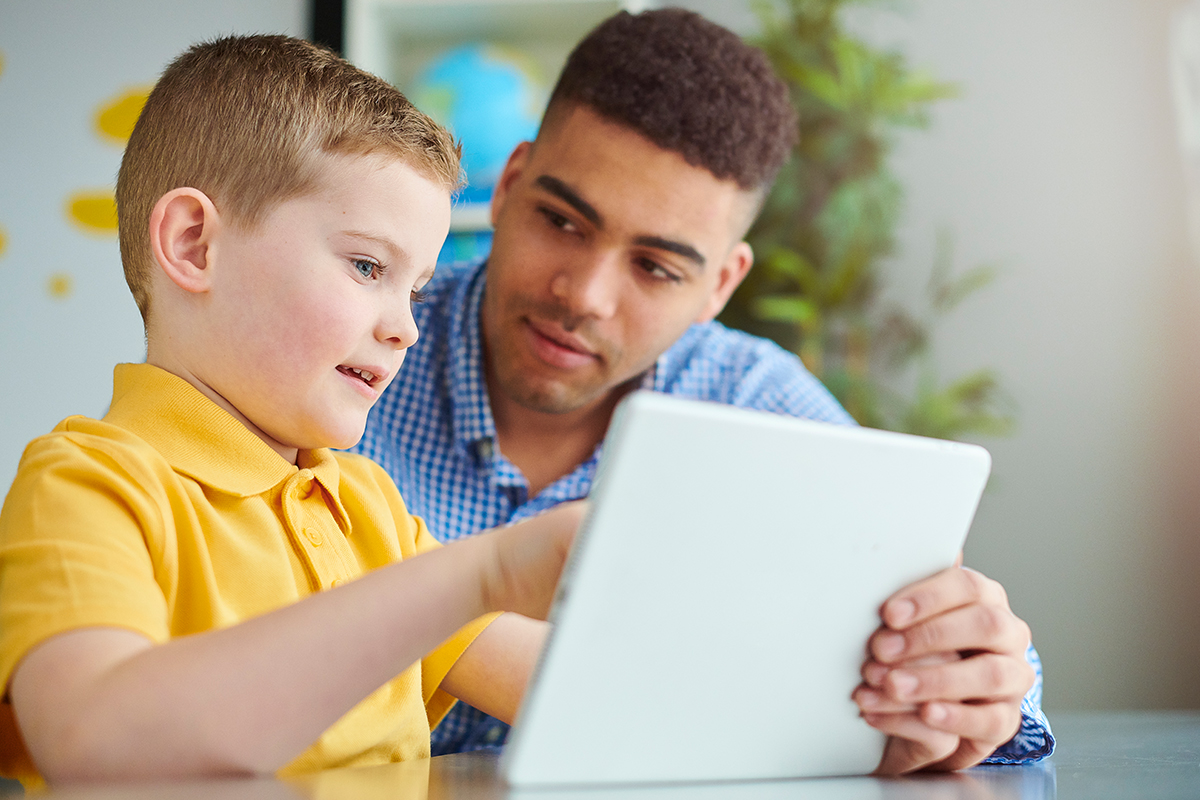The transition to distance learning for all students has been a challenge, but particularly for those in transitional kindergarten through third grade who have not yet learned to read or lack experience using computers.
A new brief from Policy Analysis for California Education identifies a number of challenges experienced in distance learning by the state’s youngest learners, as well as promising practices and potential policy changes that can positively affect the current experience of students, parents and teachers.
“Distance learning for our youngest students is challenging for students, families and teachers but it can be improved to better meet the needs of all involved if policies and practices are aligned to support the critical components of early grade distance learning,” wrote Benjamin Cottingham, associate director of Strategic Partnerships at PACE. “Current policies for distance learning in the early grades place much of the burden of educating students on families that are already stretched thin.”
There is no doubt that students of all ages face challenges in distance learning circumstances, but the state’s youngest students rarely have the same handle on the basics, meaning they must rely on a parent or guardian to help them navigate different learning platforms.
At the same time, a 7-year-old simply does not have the same ability to work independently or stay focused on a screen for extended lengths of time compared to their 16-year-old counterparts.
Policy shifts can support students, their families and their teachers
Prioritizing quality interactive synchronous learning over quantity of screen time can benefit young learners and their families, researchers concluded. Synchronous instruction is any learning that occurs at the same time between teachers and students. Focusing on short interactive lessons with small group learning opportunities can benefit both students and teachers. Children in the early grades typically have a shorter attention span than their older peers and need a variety of opportunities for interaction with classmates in small groups. Small group learning with peers rather than with the whole class can help students maintain their attention while providing teachers frequent opportunities to give individualized feedback and facilitate social interactions between students.
Research suggests students — especially those in the early grades — need synchronous, interactive instruction to build both academic and social-emotional skills. Interactive learning is most likely to occur for early grade students during synchronous instruction such as small group or partner work. Policies providing guidance for how to structure synchronous class time can build consistency in the distance learning experience for early grade students.
Additional policies and practices to improve distance learning for students in the early grades include:
- maximizing the number of available adults to support student learning at a distance;
- through partnerships and increased funding for child care providers; communicating directly and regularly with parents to understand their needs and to adjust support over time;
- developing ready-to-use curriculum and resources that help teachers and parents; and
- supporting students in distance learning.
“The shifts in policy and practice described in this brief can better support early grade distance education, but on their own, they will not provide all of the supports students, families and teachers need to engage in distance learning,” Cottingham wrote. “Additional health and economic support in communities across California is desperately needed to provide guidance and resources that can improve distance learning for young students and their families.”





